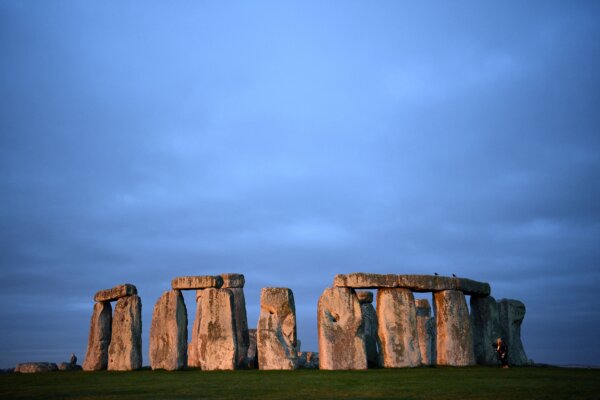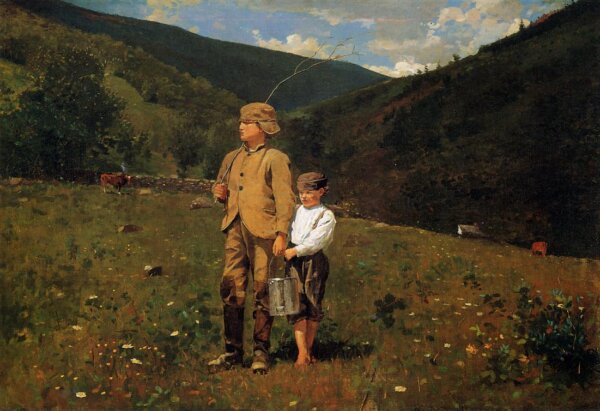| WORDS OF WISDOM | | "Don't wait. The time will never be just right." | | NAPOLEON HILL | |
Good morning! Today, we are covering the declaration of a global health emergency, the cooling of inflation in the United States, and a breakthrough in solving the mystery of Stonehenge.
Reading for the first time? Sign up here. |
| TOP NEWS |
| |
 | | Stonehenge Mystery Solved | | Geologists appear to have solved the mystery of the origin of the Altar Stone central to the ancient monument of Stonehenge on the Salisbury Plain in Wiltshire, England. The Altar Stone was long believed to have traveled 150 miles from Preseli Hills in Southwest Wales with the other megaliths until later work discounted that theory.
According to new research published in the scientific journal Nature, the 6-ton Altar Stone may have taken a longer journey of 600 miles from Northern Scotland. The journey was most likely made by sea, suggesting that the society at the time was highly organized.
According to the study, ancient Britons began construction of Stonehenge as early as 3000 B.C. and continued for two millennia. Stonehenge was constructed with sarsen stones and bluestones—or rock “considered exotic to the local area,” the study said. The Altar Stone, the study said, is the largest of the bluestones in the ancient monument. | | | |
|
WHO Declares Global Health Emergency The World Health Organization on Tuesday declared the outbreak of mpox, formerly known as monkeypox, in Africa a public health emergency of international concern due to the recent surge in cases and deaths. A global health emergency is the highest level of alarm the WHO can convey. WHO last invoked the emergency for COVID-19 in 2020. Tedros Adhanom Ghebreyesus, director-general of the WHO, said there have already been more than 14,000 reported cases and 524 reported deaths in Africa this year, a jump from last year. Mpox is a virus that occurs in animals and humans and has predominantly affected men who have sex with other men. Mpox can spread between people and causes an illness that typically manifests with a rash and resolves in a few weeks. But some cases can lead to death. Read the full story here› |
|
US Inflation Rate Slows to 2.9 Percent The rate of annual inflation in the United States cooled to 2.9 percent in July, according to the Bureau of Labor Statistics. The rate was 0.1 percent lower than expected. It is the latest indicator suggesting that the central bank may cut its interest rate next month. The shelter or housing portion of the Consumer Price Index has remained stubbornly high, despite expectations that it would ease by now. The shelter index increased 0.4 percent from June to July and was up 5.1 percent from a year ago. U.S. home prices have been touching record levels. Last month, Redfin reported that rents decreased in July for the first time since June 2020, with the national median asking rent slipping to $1,647. Consumers are becoming increasingly optimistic that the U.S. economy could be turning a corner on inflation. The New York Fed’s July Survey of Consumer Expectations (SCE) showed that the one-year inflation outlook was unchanged at 3 percent. Read the full story here› How do you like our new sections? Tell us what you think here. |
| MORE TOP NEWS |
| |
| |
| |
| |
| |
| |
| HEALTH |
| |
| INSPIRING |
| |
| |
| CULTURE |
 | | Self Reliance for the Modern Day | | Looking around, we may feel that America is in a state of moral decline. With social media and pop culture promoting instant gratification and superficial success, individualism has been diminished to become solely the pursuit and expression of self—all while vying for others' approval. But Ralph Waldo Emerson, writing in 1841, penned an essay that offers a different view of individualism.
Similar to ours, Emerson's era was one of rapid scientific, cultural, and technological transformation. His essay, "Self Reliance," urged his fellow Americans not to give up one's life to societal demands or norms.
Rejecting strict conformity, embracing self-discovery, and taking personal responsibility are only a few of the points he makes. He also warns against the dangers of victimhood and champions the pursuit of excellence grounded in integrity and humility. Emerson invites readers to reconsider the balance between individual agency and collective wisdom in our lives. | | | |
| EPOCH BUY |
| |
| EPOCH TV |
| |
| |
| OPINION |
| |
| |
| |
| EPOCH FUN |
| |
| |